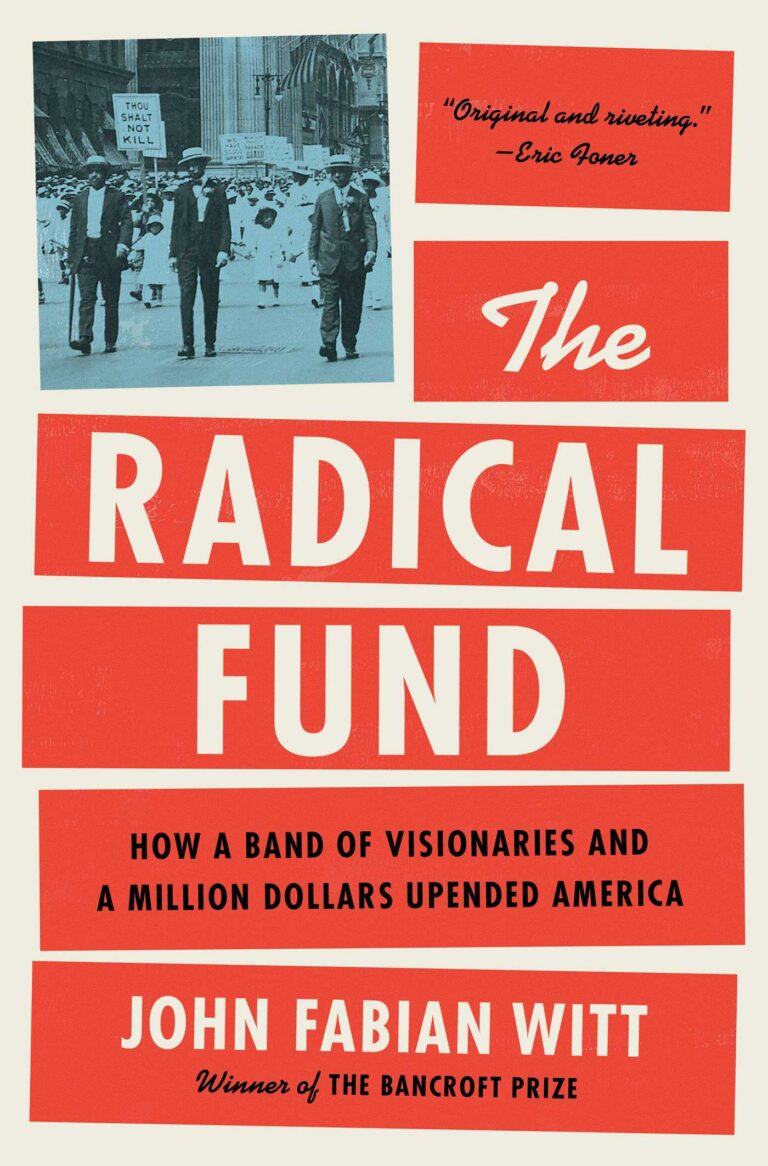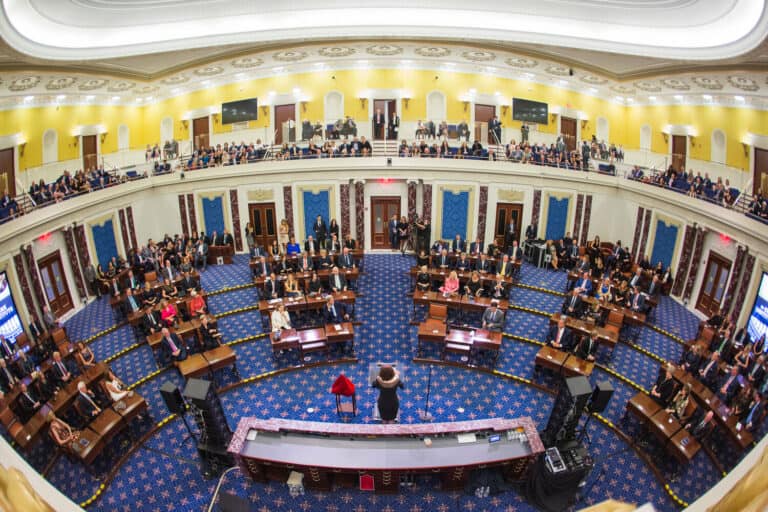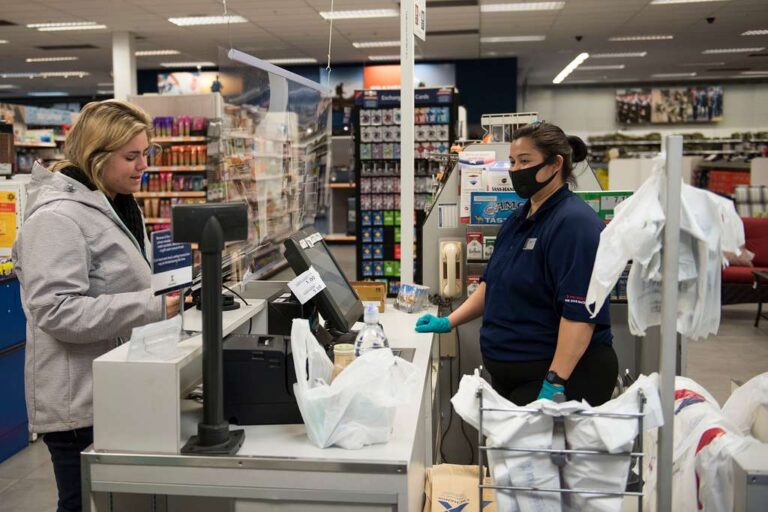
Kevin Vazquez is a staff attorney at the International Brotherhood of Teamsters. He graduated from Harvard Law School in 2023. The opinions he expresses on this blog are his own and should not be attributed to the IBT.
A Reuters report released over the weekend, which analyzed two decades of retail wages in the United States, found that union workers get paid more on average than their nonunion counterparts – and that the gap between the compensation of union and nonunion workers has been growing since the financial crisis. The report, which used a three-year rolling average of data from the U.S. Bureau of Labor Statistics, found that the average difference in weekly pay between union and nonunion retail workers grew from $20 to more than $50 between 2013 and 2019. (Reuters did not include 2020 in the analysis because of the pandemic, which, it says, is largely viewed by economists as an outlier.) In 2019, the report states, unionized retail workers made an average of approximately $730 per week; nonunionized workers, in contrast, made approximately $670 per week. Besides the obvious strengths inherent in collective bargaining, the report attributed the growing wage disparity to the greater job stability and predictability and lower rates of turnover enjoyed by unionized workers, in addition to a number of other factors.
Moreover, the report found that union organizing drives were more successful in the five years preceding the pandemic than they had been in the antecedent decade. Using data from the NLRB, Reuters found that 72 percent of the total public and private union elections in the past five years – which amounted to 5,804 in total – were in favor of the organizing workers and that nine out of every 10 petitions to form bargaining units were won by unions last year. This success rate is markedly higher than that of the last ten years, during which the NLRB presided over a total of 16,721 public and private-sector union votes, and slightly more than half went in favor of the workers attempting to organize. Even so, the percentage of unionized retail workers has been declining for at least the last 40 years; in 2019, only 4.6 percent of retail workers were unionized in the United States, a steep decline from the 9 percent unionization rate of the early 1980s. The pandemic – and all of its accompanying consequences – has certainly had a substantial impact on the future of union organizing in the United States, but the full scope of the changes it has occasioned remains to be seen, and whether its repercussions will become a fulcrum for increased bargaining and organizing success and demarcate a turning point in modern U.S. labor history is, of course, still an open question.
In other news, the CDC’s new plan for reopening schools in the fall – even if districts are unable to implement the agency’s suggested safety measures –garnered the support (albeit conditionally) of the American Federation of Teachers and National Education Association, the two largest teachers’ unions in the country, over the weekend. The CDC’s newly released recommendations, which make clear that returning to in-person instruction in the fall is a “priority,” and, while calling for the inoculation of as many students and educators as possible, instruct school districts to use local health data rather than broad nationwide prescriptions to make their own decisions on mask-wearing and physical distancing. Education, and, more specifically, school closings and reopenings, has been a heated and controversial issue for the duration of the pandemic. Teachers’ unions, in conjunction with many concerned parents, were fearful of in-person instruction and criticized hasty and inadequate plans to reopen schools. Other parents, in addition to numerous political and business leaders, many of whom seemed motivated by other interests, disparaged teachers’ unions and decried remote learning strategies as ineffective and deficient substitutes for regular classroom instruction. Although data has demonstrated that schools were much safer than previously thought and serious illness and death from the virus among children has been rare, expert opinion on the new CDC guidance has been mixed. In any event, virtually all major school districts – bolstered by the support of powerful teachers’ unions – now plan to fully reopen in the fall.
Similarly, in Washington earlier this week, the U.S. Chamber of Commerce and the AFL-CIO, in addition to a number of other organizations, such as the Business Roundtable and National Association of Manufacturers, announced a coalition designed, according to an AP report, to “add momentum for a $1.2 trillion infrastructure package” expected to be taken up by the Senate later this month. The coalition, labeled the Coalition for Bipartisan Infrastructure Investment, called for bipartisan legislation that invests in new jobs updating the country’s roads, bridges, rail lines, and airports, but the framework was immediately criticized from both sides: conservative think-tanks and organizations like Club for Growth labeled it full of “Left-leaning priorities” that were not properly paid for; and many progressives consider it an incomplete and insufficient blueprint.
Meanwhile, President Biden launched an “assault on monopolies” with a sweeping executive order on Friday that targeted concentrated industries like agriculture, airlines, broadband, and finance and aimed to “promote competition” in the economy. The order, which Politico labeled “the most ambitious effort in generations to reduce the stranglehold of monopolies and concentrated markets in major industries,” reflects a move from the Biden administration to focus on fostering competition as a major part of its pandemic recovery program. Biden, lest he be perceived as capitulating too dramatically to the progressive elements within his party, clarified that he is a “proud capitalist,” while remarking that “capitalism without competition isn’t capitalism; it’s exploitation.” Setting aside the veracity of this statement, and notwithstanding his own pronounced commitment to a capitalist economic system, Biden utilized the order to portray himself as a trust-busting working-class champion in the mold of Theodore and Franklin D. Roosevelt. Biden also took direct aim at “the misguided philosophy of people like Robert Bork” – the legal scholar and former solicitor general who infamously argued that consumers benefited from corporate mergers and that antitrust law should focus on maximizing consumer welfare rather than promoting competition.
The order calls for over-the-counter sales of hearing aids, permits the importation of prescription drugs from Canada (a major win for Sen. Bernie Sanders, who had been trumpeting such a policy for years), and includes many provisions targeting airlines, shipping, agriculture, banking and other financial services, and technology. It also urges the FTC and DOJ to update its guidance on reviewing mergers, challenging guidelines approved by the Trump administration last year, which were very deferential to business groups.
Finally, for those interested in a somewhat longer read this weekend, a piece published in the Nation, entitled “How Labor Can Win at the Bargaining Table,” chronicles a new report by Jane McAlevey and Abby Lawlor published by the UC Berkeley Labor Center. The report, it says, is a “comprehensive handbook for workplace organizing,” full of case studies that “illustrate and validate the underlying organizing method,” which builds on McAlevey’s earlier works, includes many participant interviews and case studies, and focuses on how, precisely, to win organizing campaigns. The Nation piece explores the report and documents the challenges it confronts and the criticisms raised against it, and it is a fascinating read for all those interested in the subject.






Daily News & Commentary
Start your day with our roundup of the latest labor developments. See all
November 6
Starbucks workers authorize a strike; Sixth Circuit rejects Thryv remedies; OPEIU tries to intervene to defend the NLRB.
November 5
Denver Labor helps workers recover over $2.3 million in unpaid wages; the Eighth Circuit denies a request for an en ban hearing on Minnesota’s ban on captive audience meetings; and many top labor unions break from AFGE’s support for a Republican-backed government funding bill.
November 4
Second Circuit declines to revive musician’s defamation claims against former student; Trump administration adds new eligibility requirements for employers under the Public Service Loan Forgiveness program; major labor unions break with the AFGE's stance on the government shutdown.
November 3
Fifth Circuit rejects Thryv remedies, Third Circuit considers applying Ames to NJ statute, and some circuits relax McDonnell Douglas framework.
November 2
In today’s news and commentary, states tackle “stay-or-pay” contracts, a new preliminary injunction bars additional shutdown layoffs, and two federal judges order the Trump administration to fund SNAP. Earlier this year, NLRB acting general counsel William Cowen rescinded a 2024 NLRB memo targeting “stay-or-pay” contracts. Former General Counsel Jennifer Abruzzo had declared that these kinds […]
October 31
DHS ends work permit renewal grace period; Starbucks strike authorization vote; captive-audience ban case appeal